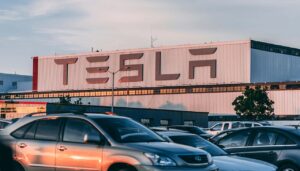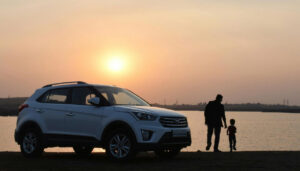
With the rapid adoption of electric vehicles (EVs) worldwide, the need for understanding EV charging is more critical than ever. This guide aims to unravel the complexities associated with home and public charging solutions, laying out key considerations and practical advice. Whether you’re a new EV owner or considering making the switch, we’ll navigate the world of EV charging together, illuminating the path towards a more sustainable and efficient future.
Understanding EV Charging Basics
Types of EV Chargers
There are three principal types of EV chargers – Level 1, Level 2, and DC Fast Chargers.
- Level 1 Chargers: These are the most basic EV chargers, typically utilizing a standard 120V AC outlet. Although they are slow, charging only about 2-5 miles of range per hour, they are convenient and require no additional installation if you have a dedicated circuit.
- Level 2 Chargers: Considerably faster than Level 1 chargers, Level 2 chargers utilize a 240V outlet (similar to a clothes dryer) and can add 10-60 miles of range per hour. They require professional installation and are often used for home and public charging.
- DC Fast Chargers: Also known as Level 3 chargers, these are the fastest charging solution available. They can charge an EV to 80% in 20-30 minutes. However, they are costly and typically used in commercial or public settings.
Charging Connectors
Different EVs use different types of charging connectors. Here are some of the most common:
- Type 1 (SAE J1772): This connector is common in North America for Level 1 and 2 charging. Most non-Tesla EVs come with this type of connector.
- Type 2 (IEC 62196): This connector is used primarily in Europe and is slowly becoming the global standard for AC charging.
- CCS (Combined Charging System): This connector combines the Type 1 or Type 2 plug with two additional DC pins for fast charging. It’s becoming the universal fast charging standard in many countries.
- CHAdeMO: This is a DC fast charging connector, predominantly used by Japanese manufacturers like Nissan and Mitsubishi.
Charging at Home
Installing a Home Charger
- Evaluating electrical capacity and requirements: Before installing an EV charger at home, it’s crucial to evaluate your home’s electrical capacity. Some older homes may require an electrical system upgrade to safely handle the additional load of an EV charger. It’s best to consult a licensed electrician to assess your home’s electrical capacity.
- Selecting the right charger for your needs: Your driving habits and EV model will determine the type of charger best suited to your needs. If you drive infrequently or short distances, a Level 1 charger may suffice. However, for daily commuters or long-distance drivers, a Level 2 charger may be more appropriate.
- Hiring a professional electrician for installation: Installation of an EV charging station should always be carried out by a licensed electrician. This ensures the installation is safe, meets local codes and regulations, and doesn’t void your charger’s warranty.
Cost of Home Charging
- Calculating electricity costs: The cost of charging an EV at home varies depending on your local electricity rates and the specific power requirements of your vehicle. To calculate, multiply your car’s battery capacity in kWh by your electricity rate in $/kWh.
- Potential savings compared to gasoline: Despite the cost of electricity, charging an EV at home is generally cheaper than filling up a gasoline car. The savings can be substantial, especially when charging during off-peak hours when electricity rates are lower.
Tips for Efficient Home Charging
- Charging during off-peak hours: Electricity rates can fluctuate throughout the day. Charging your EV during off-peak hours, usually at night, can significantly reduce your charging costs.
- Setting up a charging schedule: Many EVs and home charging stations allow you to set a charging schedule. This feature can help you take advantage of off-peak rates and ensure your EV is fully charged when you need it.
- Monitoring charging progress: Most EV charging stations have smartphone apps that allow you to monitor your charging progress and control charging remotely. This can help you manage your charging efficiently and avoid any potential issues.
Charging On the Go
Public Charging Infrastructure
- Understanding Charging Station Networks: Public charging station networks are groups of charging stations dispersed across different locations and are usually operated by specific companies. These networks are often app-based, providing real-time information about charging station availability, compatible charger types, and pricing details.
- Finding Charging Stations: Identifying charging stations is typically done through an app or website provided by the network operator or third-party services. These tools allow users to locate charging stations, check their availability, and even reserve a spot in some cases. Some EVs also have built-in navigation systems that can pinpoint nearby charging stations.
- Payment Methods and Pricing Structures: Payment for public charging varies by network. Some networks require a membership and charge a monthly fee, while others operate on a pay-as-you-go basis. Pricing can be per minute, per hour, or per kWh of electricity used. Some stations also incorporate idle fees to discourage drivers from occupying a charging spot after their vehicle’s charging is complete.
Fast Charging vs. Slow Charging
- Pros and Cons of Each Option: Fast charging is convenient, especially for long-distance travel, as it can rapidly replenish an EV’s battery. However, it’s generally more expensive than slow charging and can potentially degrade the battery if used too frequently. On the other hand, slow charging is less harmful to the battery and is typically cheaper (or even free) but requires a longer time, making it less suitable for quick top-ups during a trip.
- Considering Charging Speed and Battery Health: The charging speed doesn’t only impact how quickly an EV’s battery is replenished; it can also affect its health over time. Repeated fast charging can strain the battery, leading to quicker degradation. Therefore, it’s recommended to use slow charging for regular, daily use, and save fast charging for long drives or when absolutely necessary.
Planning Long-Distance Trips
- Mapping Out Charging Stations Along the Route: To successfully plan an EV road trip, it’s important to map out charging stations along your route. Using network apps or your vehicle’s navigation system, identify charging hubs at intervals that align with your vehicle’s range and your travel plans.
- Factoring in Charging Time for Pit Stops: Consider the time it’ll take to charge your vehicle when planning rest stops. Fast charging stations can provide a significant charge while you take a meal break. For slower chargers, consider scheduling overnight stops at locations with charging facilities. Keep in mind that your vehicle’s charging speed may decrease as the battery gets closer to full, so it might not always be efficient to wait for a 100% charge.





